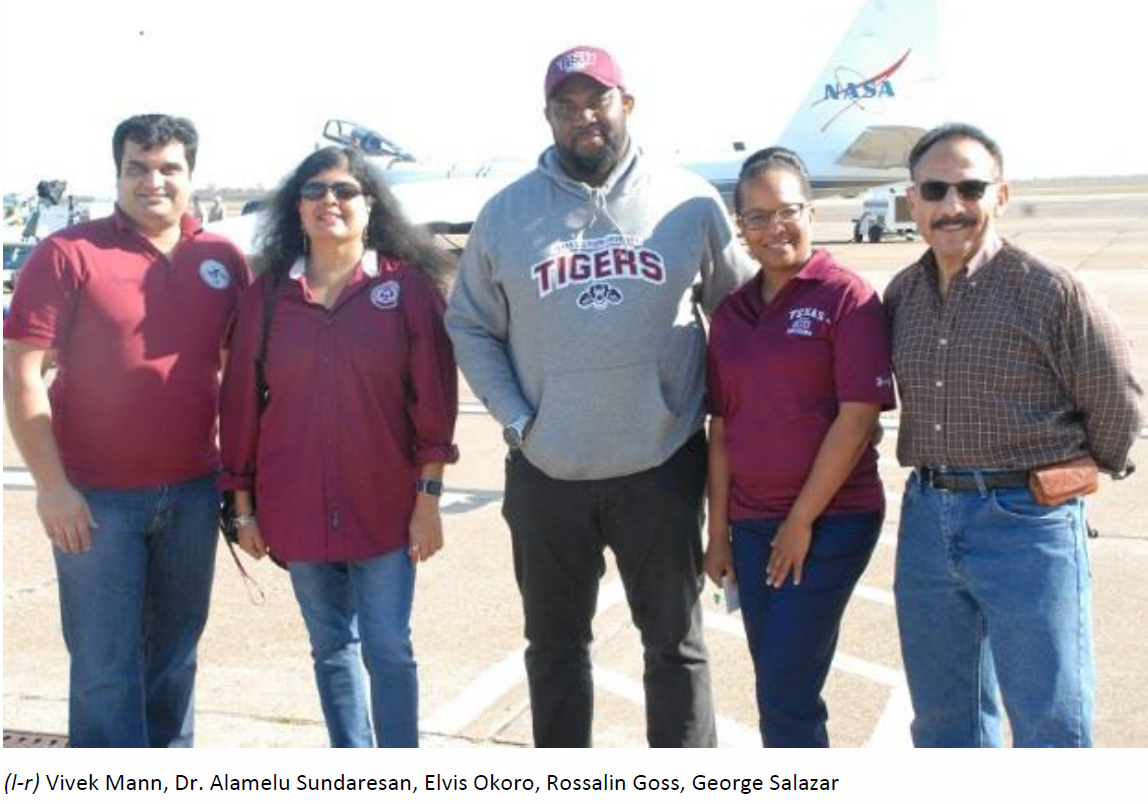

Posted on Monday, December 11, 2017

Texas Southern University doctoral students Rossalin Goss and Elvis Okoro were selected to participate in NASA’s Student Opportunities in Airborne Research (SOAR) missions. The pair were two of more than 130 students from seven colleges to work with NASA engineers to design experiments to fly missions utilizing NASA’s WB-57 High-Altitude Aircraft. The experiments were conducted the week of November 27-December 1 at Ellington Air Force Base.
Goss and Okoro conducted biological experiments to analyze how cells respond to conditions at high altitude.
“I’m very proud to see Texas Southern University’s participation in our SOAR design challenge,” said Misti Moore, program manager, NASA’s Minority University Research and Education Program. “SOAR is an opportunity where the work students are doing at their institution also meets with the work that is happening here related to NASA’s mission. It shows the students that the work they do is very relevant and will be useful once they graduate.”
Goss flew human fibroblast cells inside a triploid containment at 60,000 feet. Her mission was designed to detect if any of the cells would be exposed to radiation particles and if any DNA damage would be caused by cosmic rays. Dr. Bobby Wilson served as the principal investigator and Dr. Honglu Wu served as the technical advisor. George Salazar of NASA assisted in the planning and preparation.
Okoro flew human lymphocytic cells at 60,000 feet. His mission was designed to investigate physiological changes at a molecular level in immune cell function that may occur in freezing temperatures during high-altitude flight. Okoro’s research will benefit the design of future spaceflight experiments by reducing mass requirements and crew time. Dr. Alamelu Sundaresan, biology professor, served as the principal investigator and Vivek Mann, adjunct professor in biology, served as the co-principal investigator. Dr. Edward Osakue, associate professor in industrial technologies,performed the stress analysis which was a vital step in preparing the experiment and getting it approved.
Data recorded during the flights will be made available to scientists and researchers to use while designing instruments for the WB-57 and will support other NASA missions.
Category: News Media